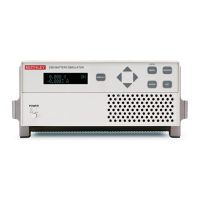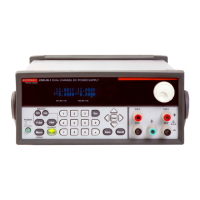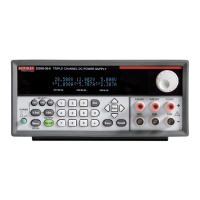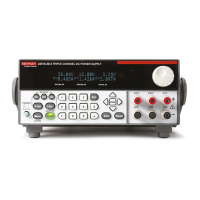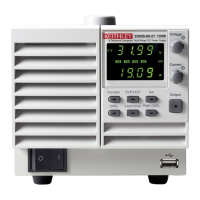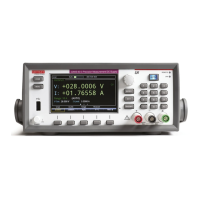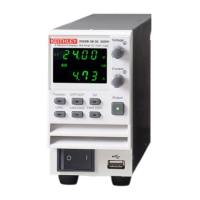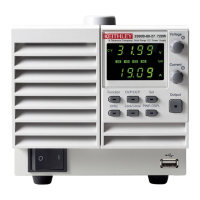Pulse Current Measurements 3-3
Trigger level
To avoid false pulse detection, you can use a trigger level of up to 5A. All pulses, noise, or
other transients that are less than the set trigger level will be ignored. For Models 2303 and
2303B, the maximum trigger level is 5A. For Model 2303-PJ, the trigger level can be set for each
measurement range. For the 5A range the maximum trigger level is 5A, and for the 500mA
range, the maximum trigger level is 500mA.
Trigger delay
When a pulse is detected, there is a 25µsec code execution delay before the integration period
begins. An additional trigger delay can be used to allow leading edge pulse overshoot to settle.
The integration period will not start until the trigger delay period expires. Note that a large trig-
ger delay will slow down power supply operation.
Integration times
The three integration time periods for pulse measurements can be set automatically or man-
ually by the user. When the pulse auto time operation is performed, the instrument measures the
high and low periods of the detected pulse and sets appropriate integration times. The pulse
average time is set to the sum of the measured high and low times. The three integration times
apply for all subsequent pulse measurements until another pulse auto time is performed or the
times are changed manually. The pulse auto time feature can detect pulses in the 80µsec to
833msec range.
You can manually set the PULSE HIGH TIME, PULSE LOW TIME, and PULSE AVG
TIME. In general, the longer the integration period, the more accurate the measurement. How-
ever, you must make sure an integration period does not extend into the wrong portion of the
pulse or into the next pulse. For example, if the pulse is high for 600µsec, the high integration
time must be ≤600µsec. If not, you will integrate a low portion of the pulse, and the high pulse
measurement will therefore be erroneous. Be sure to factor in trigger delay when determining
integration times.
Average readings count
The average readings count specifies how many measurements (integrations) are performed
and averaged for each displayed reading. For example, assume that the pulse average readings
count is 10 and you are measuring PULSE HIGH. Each displayed reading will reflect the aver-
age of 10 peak pulse measurements.
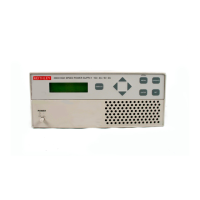
